
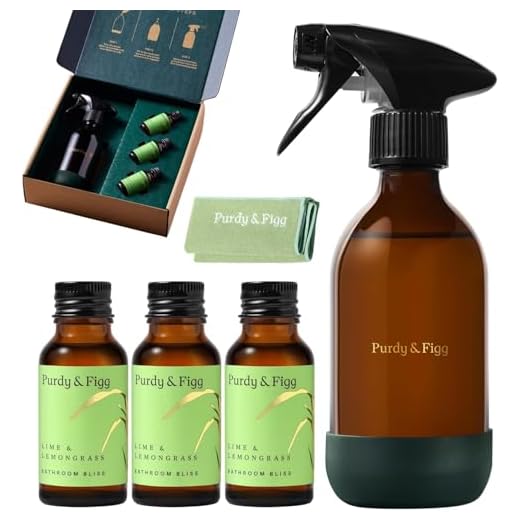



Dealing with a clogged toilet can be a frustrating and unpleasant experience. However, unclogging it doesn’t have to be a difficult task. One tried and tested method is to use caustic soda, a powerful chemical that can effectively dissolve blockages and restore the proper functioning of your toilet. In this article, we will guide you through the step-by-step process of unclogging your toilet using caustic soda, ensuring a quick and effective solution to this common household problem.
Before we begin, it’s important to note that caustic soda is a highly corrosive substance and should be handled with caution. Always wear gloves and protective eyewear when working with caustic soda, and ensure proper ventilation in the room to avoid inhaling any fumes. It is also advisable to keep pets and children away from the area while you unclog the toilet.
To start, you will need to gather the necessary materials. Apart from caustic soda, you will also need a bucket, a long handle plunger or toilet auger, and hot water. It’s important to choose a caustic soda product that is specifically designed for unclogging toilets, as these have a higher concentration of the chemical.
The Importance of a Clean Toilet
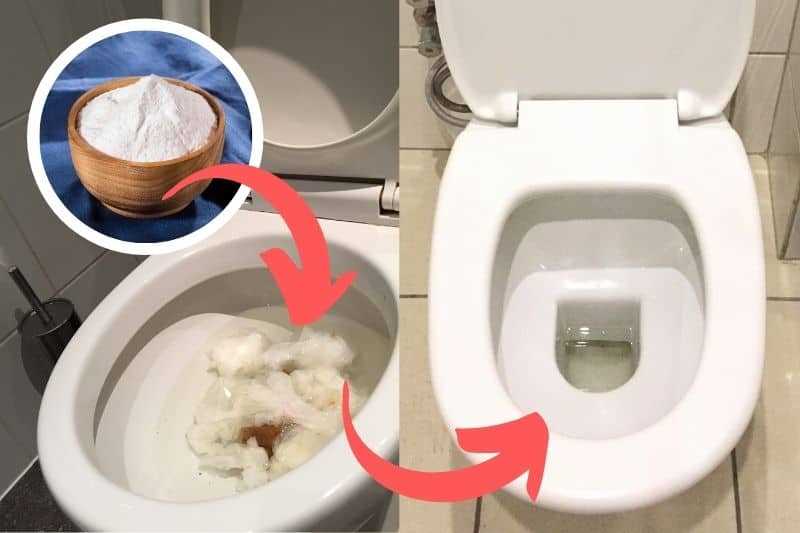
A clean toilet is not only essential for maintaining good hygiene and preventing the spread of diseases, but it also plays a crucial role in ensuring the comfort and well-being of individuals and promoting a pleasant living environment. Here are some reasons why it is important to keep your toilet clean:
1. Hygiene and Health
A clean toilet helps to prevent the transmission of harmful bacteria and viruses that can cause various illnesses, including gastrointestinal infections, urinary tract infections, and respiratory infections. Regular cleaning and disinfection of the toilet can eliminate these pathogens, reducing the risk of illness for you and your family.
2. Odor Control
A clean toilet prevents unpleasant odors from lingering in your bathroom. Regular cleaning, especially of the toilet bowl, can help to eliminate any foul smells caused by bacterial growth and urine residue. This will create a more pleasant and inviting environment in your home.
3. Preventing Stains and Damage
Regular cleaning can help prevent stains and damage to your toilet. Mineral and hard water stains can build up over time and be difficult to remove if not addressed promptly. By keeping your toilet clean, you can prevent these stains from becoming permanent and prolong the lifespan of your toilet.
4. Psychological Impact
A clean toilet can have a positive psychological impact on individuals. A dirty and unhygienic toilet can create feelings of discomfort, embarrassment, and stress. On the other hand, a clean and well-maintained toilet promotes a sense of cleanliness, comfort, and peace of mind.
5. Maintaining a Pleasant Living Environment
A clean toilet contributes to a pleasant living environment for both you and your guests. It shows that you take pride in your home and care about the well-being of those who visit. A clean toilet also reflects positively on your overall cleanliness and can make a significant difference in the overall cleanliness of your home.
Overall, keeping your toilet clean is crucial for maintaining good hygiene, promoting a healthy environment, and ensuring the well-being and comfort of individuals. Regular cleaning and disinfection can help prevent the spread of diseases, control odors, prevent stains and damage, and create a pleasant living environment.
Why You Should Unblock Your Toilet
1. Avoid further damage
Leaving a blocked toilet unaddressed can lead to more serious problems over time. The pressure from a clogged toilet can cause pipes to burst or leak, resulting in water damage to your bathroom floor and surrounding areas. It is important to act quickly to prevent costly repairs and potential health hazards.
2. Maintain a clean and hygienic environment
A blocked toilet can quickly become a breeding ground for bacteria and unpleasant odors. If left unresolved, it can create an unsanitary living condition, affecting the overall hygiene of your bathroom and home. Unblock your toilet to ensure a clean and safe environment for you and your family.
3. Restore functionality and convenience

A blocked toilet can be a major inconvenience, especially when you have multiple people using the same bathroom. By unblocking your toilet, you can restore its functionality and ensure that it operates smoothly, providing a hassle-free experience for everyone.
4. Reduce the risk of plumbing emergencies
By addressing a blocked toilet promptly, you can minimize the risk of a plumbing emergency. Ignoring a clog can put excessive strain on your plumbing system, increasing the likelihood of further blockages or other issues down the line. Unblock your toilet to maintain the overall health and functionality of your plumbing system.
5. Save time and money
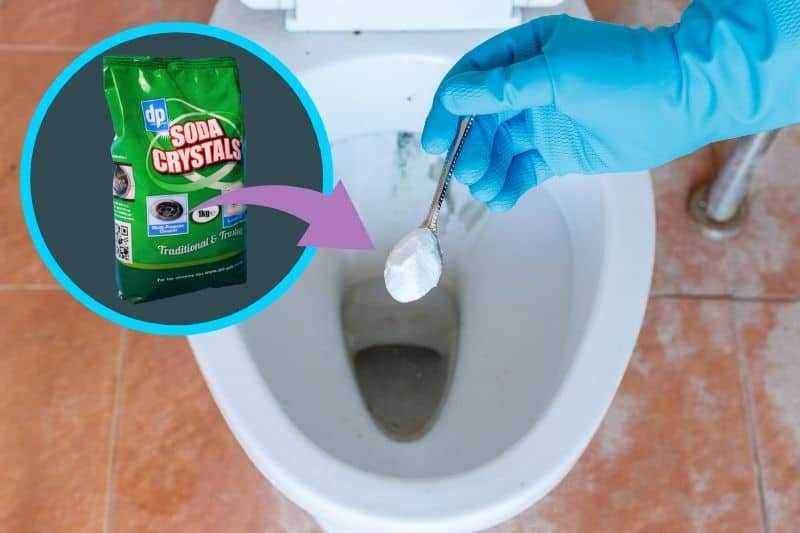
Calling a professional plumber to unblock your toilet can be costly, especially if it requires extensive repairs. By learning how to unblock your toilet yourself using caustic soda and other simple methods, you can save both time and money. This allows you to quickly resolve the issue and avoid unnecessary expenses.
| Benefit | Description |
|---|---|
| Avoid further damage | Prevent burst or leaking pipes, saving on repair costs |
| Maintain a clean and hygienic environment | Prevent the buildup of bacteria and unpleasant odors |
| Restore functionality and convenience | Ensure a smoothly operating toilet for everyone to use |
| Reduce the risk of plumbing emergencies | Minimize the likelihood of future blockages and issues |
| Save time and money | Avoid costly professional plumber services |
Understanding the Role of Caustic Soda
Caustic soda, also known as sodium hydroxide, is a powerful chemical compound that plays a crucial role in various applications. When it comes to unclogging a toilet, caustic soda is often the go-to solution due to its effectiveness in breaking down organic matter and dissolving blockages.
Caustic soda is a white, solid substance that is highly soluble in water and forms a strong alkaline solution. It is commonly used in industries such as manufacturing, cleaning, and wastewater treatment. In the context of unclogging a toilet, caustic soda serves as a potent drain cleaner that can eliminate stubborn clogs and restore proper drainage.
How Does Caustic Soda Work?
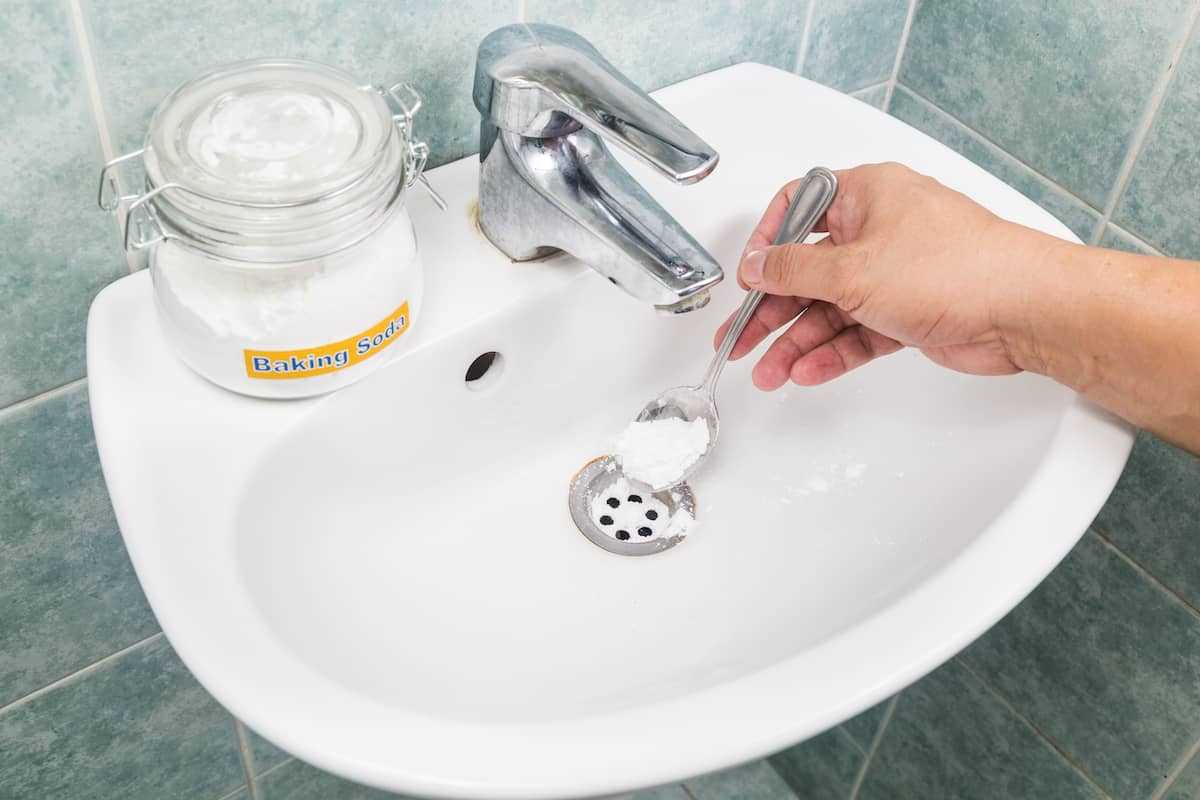
When caustic soda is mixed with water, it undergoes a chemical reaction that produces heat. This exothermic reaction helps to melt the blockage, allowing it to flow through the drain pipe. The alkaline nature of caustic soda also helps to break down organic matter and dissolve greasy substances, making it an effective toilet unclogging agent.
Caustic soda works by saponifying fats and oils, transforming them into soap-like substances that can be easily washed away. It also reacts with proteins in organic matter, causing them to break down into smaller, more soluble compounds.
Safety Precautions and Handling
Caustic soda should be handled with caution due to its corrosive nature. It can cause severe burns and eye damage if it comes into contact with the skin or eyes. It is important to wear protective gloves, goggles, and clothing when using caustic soda.
Furthermore, caustic soda should never be mixed with other cleaning products or chemicals, as this can result in hazardous reactions. It is important to always read and follow the manufacturer’s instructions and to properly store caustic soda in a cool, dry place, out of reach of children and pets.
Conclusion
Understanding the role of caustic soda is essential when it comes to effectively unclogging a toilet. Its powerful chemical properties make it an ideal solution for breaking down blockages and restoring proper drainage. However, it is crucial to handle caustic soda with care and to follow safety precautions to prevent accidents and injuries.
How Caustic Soda Works in Unblock Your Toilet
Caustic soda, also known as sodium hydroxide, is a strong and powerful chemical that can effectively unclog a blocked toilet. It works by breaking down organic matter, such as toilet paper and waste, that may be causing the blockage.
When caustic soda is mixed with water, it creates a chemical reaction that generates heat. This heat helps to soften and dissolve the blockage, allowing it to be easily flushed away. Caustic soda is highly alkaline, with a pH level of around 14, which makes it extremely effective in breaking down stubborn clogs.
Here is a step-by-step guide on how to use caustic soda to unblock your toilet:
- Put on protective gloves and goggles to ensure your safety.
- Measure out the appropriate amount of caustic soda according to the instructions on the packaging. It’s important to follow the recommended dosage, as using too much caustic soda can cause damage to your plumbing system.
- Pour the measured amount of caustic soda into a bucket of water. It’s essential to add the caustic soda to water and not the other way around, as adding water to caustic soda can cause a violent reaction.
- Stir the solution with a wooden or plastic spoon until the caustic soda is completely dissolved.
- Carefully pour the caustic soda solution into the toilet bowl, making sure to avoid any splashes.
- Leave the solution to work its magic for about 30 minutes. During this time, the caustic soda will break down the blockage and help clear the pipes.
- After 30 minutes, flush the toilet to see if the blockage has been cleared. If the water drains away easily, then the caustic soda has done its job.
- If the blockage persists, you may need to repeat the process or seek professional help.
It’s important to remember that caustic soda is a powerful chemical and should be handled with caution. Always read and follow the instructions on the packaging, and avoid contact with your skin or eyes. Keep caustic soda out of reach of children and pets.
In conclusion, using caustic soda is a quick and effective method to unblock your toilet. Its powerful properties allow it to break down blockages and clear your plumbing system. However, it’s crucial to use caustic soda safely and responsibly to avoid any accidents or damage to your toilet or pipes.
Step-by-Step Guide to Using Caustic Soda
1. Gather the necessary materials
Before you begin, make sure you have the following materials:
- Protective gloves
- Protective eyewear
- A bucket
- A plunger
- Caustic soda (sodium hydroxide)
- Water
2. Put on protective gear
Caustic soda is a strong chemical, so it’s important to protect yourself before using it. Put on your protective gloves and eyewear to avoid any direct contact with the caustic soda.
3. Prepare the caustic soda mixture
In a bucket, mix one cup of caustic soda with three cups of water. Stir the mixture well until the caustic soda is completely dissolved.
4. Pour the mixture into the toilet
Carefully pour the caustic soda mixture into the toilet bowl. Make sure to pour it slowly and avoid splashing. The caustic soda will start to react with any clogs or blockages in the pipes.
5. Let it sit
Allow the caustic soda mixture to sit in the toilet bowl for about 20 minutes. This will give the solution enough time to work on breaking down the blockage.
6. Use a plunger
After the caustic soda has had time to work, use a plunger to try and dislodge the blockage. Use firm but controlled plunging motions to create pressure and dislodge the clog.
7. Flush the toilet
Once you have successfully cleared the clog, flush the toilet to clean out any remaining debris and caustic soda mixture. Make sure to thoroughly rinse the toilet to remove any traces of the caustic soda.
8. Dispose of the caustic soda mixture safely
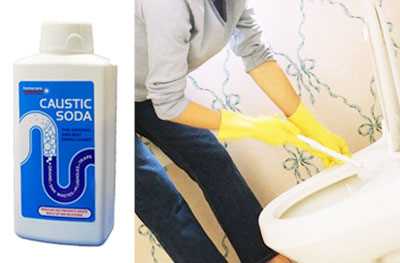
Remember that caustic soda is a hazardous substance, so it’s important to dispose of the leftover mixture safely. Follow the proper guidelines for hazardous waste disposal in your area.
9. Clean up
After completing the unclogging process, clean up any spills or splashes that may have occurred during the process. Dispose of any used protective gear appropriately and wash your hands thoroughly with soap and water.
10. Prevention is key
To avoid future clogs, make sure to dispose of waste and toilet paper properly. Avoid flushing items that can easily cause blockages, such as wet wipes, sanitary products, or excessive amounts of toilet paper.
Following these steps will help you safely and effectively use caustic soda to unblock your toilet. If the clog persists or you have any concerns, it’s best to contact a professional plumber for further assistance.
Precautions to Take When Using Caustic Soda
1. Wear Protective Gear
When using caustic soda, it is crucial to protect yourself from potential harm and skin irritation. Wear rubber gloves, safety goggles, and a protective apron or clothing to prevent any direct contact with the caustic soda.
2. Work in a Well-Ventilated Area
Caustic soda releases fumes that can be harmful if inhaled. Ensure that you are working in a well-ventilated area to avoid breathing in these fumes. Open windows or doors, and use fans or ventilation systems to keep the air circulating.
3. Avoid Mixing Caustic Soda with Other Substances
Caustic soda should not be mixed with any other chemicals, especially acids. This can lead to dangerous reactions or releases of toxic gases. Always handle caustic soda separately and keep it away from other substances.
4. Follow Proper Dilution Guidelines
When using caustic soda, it is essential to dilute it properly. Follow the manufacturer’s instructions on how to dilute the caustic soda before use. Using an incorrect concentration can result in unpredictable reactions or damage to your toilet and plumbing.
5. Never Dispose of Caustic Soda Down Drains
After using caustic soda to unblock your toilet, never dispose of it down drains or toilets. Instead, follow the proper disposal guidelines for hazardous chemicals in your area. Caustic soda can cause damage to pipes and the environment if not disposed of correctly.
6. Store Caustic Soda Safely

Keep caustic soda stored in a secure place away from children and pets. Ensure that the container is tightly sealed and labeled correctly. Store it in a cool, dry place, away from direct sunlight or heat sources.
7. Dispose of Caustic Soda Containers Properly
When you have finished using caustic soda or if the container is empty, dispose of it correctly. Check with your local waste management authority for guidelines on how to dispose of hazardous materials. Do not throw empty containers in regular trash or recycling bins.
By following these precautions, you can safely and effectively use caustic soda to unblock your toilet without causing harm to yourself or the environment.
Tips for Maintaining a Functioning Toilet
1. Regular Cleaning
To maintain a functioning toilet, it is essential to clean it regularly. Use a toilet brush and a mild cleaning solution to scrub the bowl, inside and out. Pay attention to the water line, the rim, and the jets. Regular cleaning helps prevent the build-up of dirt, minerals, and bacteria.
2. Avoid Flushing Non-Flushable Items
One of the most common causes of toilet blockages is flushing non-flushable items down the toilet. Avoid flushing items such as baby wipes, cotton balls, paper towels, feminine hygiene products, or anything else that is not specifically designed to be flushed. Use a trash bin instead.
3. Use a Toilet Plunger
If you notice a partial blockage or slow drainage in your toilet, use a plunger to try and unclog it. Place the cup of the plunger over the drain hole, ensuring a tight seal, and firmly push and pull to create pressure and dislodge the blockage. Repeat as necessary until the toilet drains properly.
4. Install a Toilet Paper Holder
Installing a toilet paper holder can help prevent excessive toilet paper usage. Ensure that the holder is placed within easy reach of the toilet and that it is securely mounted. This can help reduce the risk of excessive toilet paper being flushed, which can lead to clogs.
5. Check the Water Level
Occasionally check the water level in your toilet tank to ensure it is at the appropriate level. If the water level is too high or too low, it can affect the flushing performance of the toilet. Adjust the water level if necessary, following the manufacturer’s instructions.
6. Inspect the Flush Mechanism
Regularly inspect the flush mechanism of your toilet to ensure it is working properly. Check the flapper valve, chain, and other components for any signs of wear or damage. If necessary, replace any faulty parts to maintain optimal flushing performance.
7. Schedule Professional Maintenance
Consider scheduling periodic professional maintenance for your toilet. A plumber can inspect your toilet for any hidden issues, clean the internal components, and make any necessary repairs to keep your toilet functioning smoothly.
8. Educate Household Members
Make sure all household members are aware of proper toilet usage and maintenance practices. Teach everyone in your household what can and cannot be flushed down the toilet to prevent clogs and other issues. Encourage everyone to report any toilet-related problems promptly.
9. Avoid Excessive Use of Chemical Cleaners
While chemical cleaners can be effective in unclogging toilets, avoid excessive use of these products. Harsh chemicals can damage the internal components of your toilet over time. If a blockage persists despite using a plunger, consider seeking professional help.
10. Handle Leaks Promptly
If you notice any leaks around your toilet, address them promptly. Leaks can lead to water damage, increased water bills, and other issues. Identify the source of the leak and take the necessary steps to repair it or seek professional assistance if needed.
By following these tips, you can help maintain a functioning toilet and prevent the inconvenience and expense of toilet blockages and other issues.
FAQ
What is caustic soda?
Caustic soda, also known as sodium hydroxide, is a highly alkaline chemical compound commonly used for cleaning and unblocking drains.
Is caustic soda safe to use?
Caustic soda should be handled with care as it is a corrosive substance. It is important to wear protective gloves and goggles when using it to unblock a toilet.
How does caustic soda unblock a toilet?
Caustic soda works by reacting with water to produce heat and a caustic solution. This solution helps to dissolve and break down the blockage, allowing it to be flushed away.
Can I use caustic soda for other drain blockages?
Yes, caustic soda can be used for other drain blockages as well. It is an effective solution for clearing various types of clogs, including hair, grease, and soap scum.
How do I use caustic soda to unblock my toilet?
To use caustic soda, you will need to carefully pour a certain amount of the chemical into the toilet bowl. Let it sit for a specific amount of time, usually mentioned on the product’s instructions, and then flush the toilet to clear the blockage.
Are there any alternatives to using caustic soda?
Yes, there are alternatives to using caustic soda for unblocking a toilet. Some common alternatives include using a plunger, a plumbing snake, or a mixture of baking soda and vinegar.
Can I use caustic soda for a severely blocked toilet?
Caustic soda can be effective for mildly blocked toilets, but for severely blocked toilets, it may not be enough. In such cases, it is recommended to seek professional help from a plumber.













